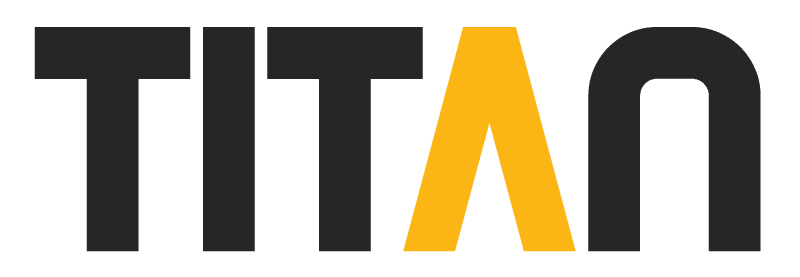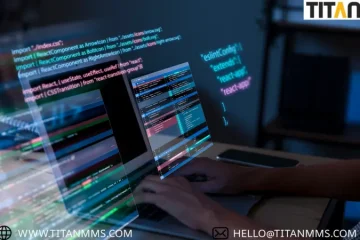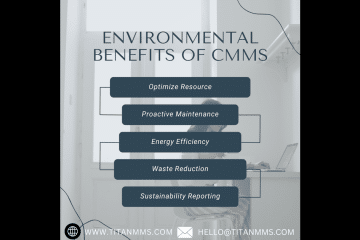Introduction
In today’s rapidly evolving industrial landscape, the integration of Industrial Internet of Things (IIoT) with Computerized Maintenance Management Systems (CMMS) emerges as a critical advancement. This article delves into the symbiotic relationship between IIoT and CMMS, exploring their integration benefits, challenges, and optimal strategies. As industries adapt to digital transformations, combining IIoT’s smart devices with CMMS’s maintenance management brings efficiency and foresight to maintenance practices, paving the way for smoother operations and reduced downtime.
Understanding IIoT
Industrial Internet of Things (IIoT) refers to interconnected devices, sensors, and software systems within industrial environments. It facilitates seamless data exchange and automation, transforming traditional maintenance practices. By enabling real-time monitoring and predictive analytics, IIoT revolutionizes asset management and operational efficiency. IIoT enables businesses to gather valuable insights into equipment performance, detect potential issues early, and optimize maintenance schedules for improved productivity.
Exploring CMMS Systems
Computerized Maintenance Management Systems (CMMS) streamline maintenance operations by centralizing asset information, scheduling maintenance tasks, and tracking work orders. They act as comprehensive repositories of maintenance data, empowering organizations to make informed decisions and optimize asset performance. CMMS systems enable efficient management of maintenance activities, ensuring timely repairs and minimizing equipment downtime for enhanced productivity. By providing a centralized platform for maintenance activities, CMMS enhances communication between maintenance teams, streamlines workflow processes, and improves overall operational efficiency.
The Need for Integration
Enhanced Asset Performance:
The integration of IIoT with CMMS enhances asset performance monitoring capabilities significantly. IIoT sensors continuously collect and transmit real-time data on asset health and performance, empowering organizations to implement proactive and predictive maintenance strategies. By preemptively identifying potential issues and scheduling maintenance tasks accordingly, organizations can minimize downtime, prolong asset lifespan, and optimize operational efficiency effectively.
Data-Driven Decision Making:
Integration facilitates data-driven decision-making processes. IIoT-generated data offers invaluable insights into asset condition, usage patterns, and maintenance requirements. By leveraging this data within CMMS platforms, organizations can develop proactive maintenance strategies, allocate resources efficiently, and optimize overall maintenance performance. This integration enables organizations to identify trends, analyze historical data, and continuously improve maintenance practices to meet evolving operational needs.
Challenges and Solutions
Data Integration Complexity:
One of the primary challenges in IIoT-CMMS integration is the complexity of data integration. IIoT devices often generate vast amounts of heterogeneous data, which must be effectively integrated into CMMS platforms. Employing standardized communication protocols and leveraging middleware solutions can streamline data integration processes, ensuring compatibility and reliability across disparate systems. Additionally, thorough planning and testing are essential to address potential compatibility issues and ensure seamless data flow between IIoT devices and CMMS platforms.
Security Concerns:
Security remains a paramount concern in IIoT-CMMS integration efforts. The interconnected nature of IIoT devices introduces vulnerabilities that could compromise data integrity and system functionality. To mitigate these risks, organizations must implement robust security measures, including encryption protocols, access controls, and regular security audits. By prioritizing data security, organizations can safeguard sensitive information and maintain operational continuity. Additionally, staying vigilant against emerging threats and staying abreast of industry best practices is crucial to ensuring ongoing protection against potential security breaches.
Best Practices
Define Integration Objectives:
Successful integration begins with clearly defined objectives aligned with organizational goals. By establishing specific integration goals and key performance indicators (KPIs), organizations can measure the effectiveness of integration efforts and quantify the resulting benefits. This approach enables organizations to track progress, identify areas for improvement, and demonstrate the tangible value of IIoT-CMMS integration to stakeholders. Additionally, regular evaluation and refinement of integration strategies ensure alignment with evolving business objectives and technological advancements.
Collaborative Approach:
A collaborative approach involving cross-functional teams is essential for successful integration. Collaboration between IT, maintenance, and operational departments ensures a comprehensive understanding of technical requirements, operational constraints, and business objectives. By fostering collaboration and communication, organizations can overcome implementation challenges and achieve seamless integration. This collaborative effort fosters a culture of innovation and problem-solving, allowing diverse perspectives to contribute to the development of effective integration solutions. Additionally, ongoing communication and knowledge-sharing facilitate continuous improvement and optimization of integrated systems.
Continuous Monitoring and Optimization:
Integration is an ongoing process that requires continuous monitoring and optimization. Organizations should regularly evaluate integration performance, solicit feedback from end-users, and identify areas for improvement. By adopting an iterative approach, organizations can adapt to evolving requirements and maximize the value of IIoT-CMMS integration over time. This iterative process allows organizations to stay responsive to changing business needs and technological advancements, ensuring that the integrated system remains aligned with organizational objectives. Additionally, regular monitoring and optimization efforts help to identify emerging opportunities for further enhancing operational efficiency and effectiveness.
Future Trends
AI and Machine Learning Integration:
The future of IIoT-CMMS integration lies in the integration of artificial intelligence (AI) and machine learning algorithms. Advanced analytics capabilities enable predictive maintenance models that anticipate equipment failures and prescribe optimal maintenance actions. By harnessing AI-driven insights, organizations can further enhance maintenance efficiency and asset reliability. AI-powered algorithms continuously analyze vast amounts of data from IIoT sensors, enabling organizations to detect patterns, identify anomalies, and make data-driven decisions in real-time. This proactive approach minimizes unplanned downtime, extends equipment lifespan, and ultimately improves overall operational performance.
Cloud-Based Solutions:
Cloud-based CMMS solutions are poised to play a pivotal role in future integration efforts. Cloud infrastructure offers scalability, flexibility, and accessibility, enabling organizations to leverage real-time data analytics and remote monitoring capabilities. By migrating CMMS platforms to the cloud and integrating them with IIoT systems, organizations can unlock new opportunities for innovation and operational excellence. Additionally, cloud-based solutions facilitate seamless collaboration and data sharing across multiple locations, empowering organizations to achieve greater agility and responsiveness in their maintenance operations.
Conclusion
The integration of IIoT with CMMS systems represents a transformative shift in industrial maintenance practices. By harnessing the power of real-time data, predictive analytics, and collaborative technologies, organizations can optimize asset performance, minimize downtime, and drive operational efficiency. As integration efforts continue to evolve, embracing emerging technologies and best practices will be essential for staying ahead in an increasingly competitive landscape. Embracing innovation and continuous improvement ensures organizations remain adaptable and responsive to evolving industry trends and customer demands, positioning them for long-term success in the dynamic industrial landscape.
FAQs
Q1. How does IIoT integration benefit maintenance efficiency?
Ans. Integrating IIoT with CMMS enables predictive maintenance, reducing unplanned downtime and enhancing asset reliability.
Q2. What role does data security play in IIoT-CMMS integration?
Ans. Data security is crucial. Implementing encryption, access controls, and regular audits safeguards against cyber threats and ensures data integrity.
Q3. How can organizations ensure successful integration?
Ans. Organizations should define clear integration objectives, foster collaboration between departments, and leverage standardized protocols and middleware solutions.
Q4. What are the future trends in IIoT-CMMS integration?
Ans. Future trends include AI and machine learning integration for predictive maintenance and the adoption of cloud-based solutions for scalability and accessibility.
Q5. What are the key benefits of cloud-based CMMS solutions?
Ans. Cloud-based CMMS solutions offer scalability, accessibility, and real-time data analytics, facilitating remote monitoring and decision-making.
To read More Blogs Click Here!




0 Comments